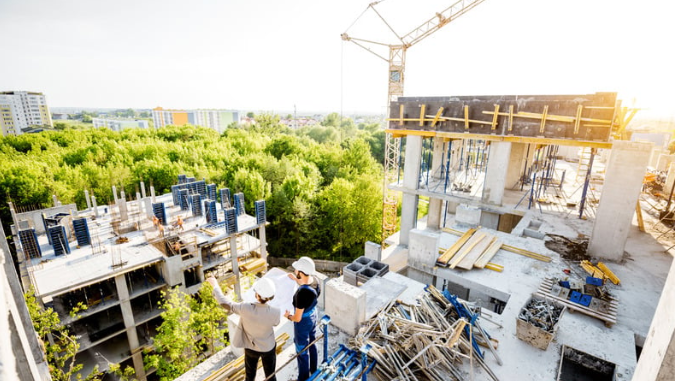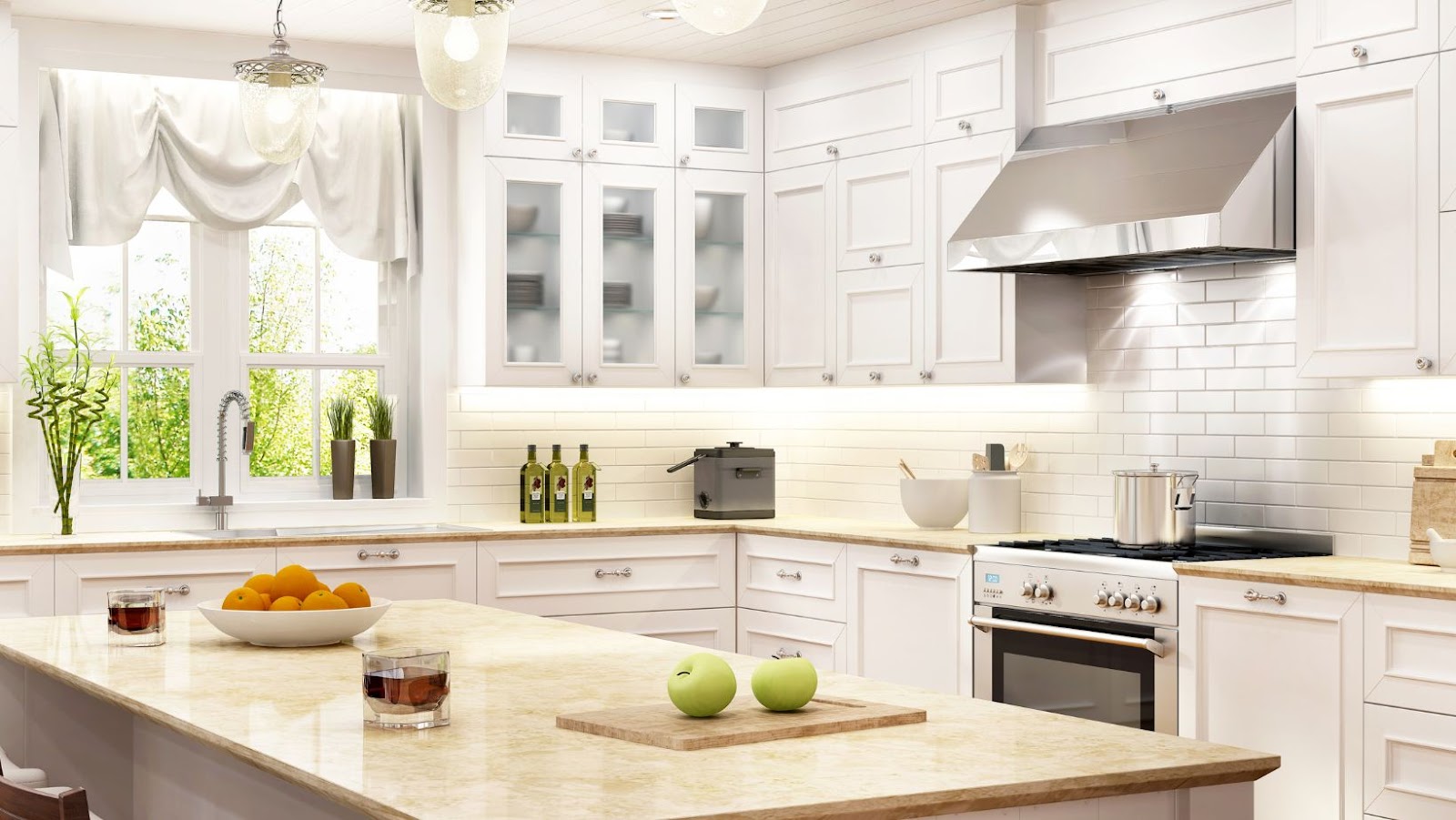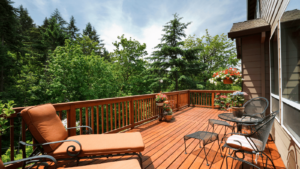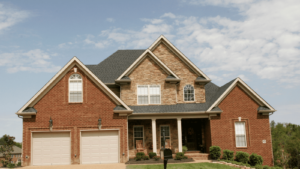The Sustainability of Brick Construction

Brick construction stands out as a sustainable option in building, as compared to concrete masonry unit or CMU construction. Bricks manufactured from natural materials, such as clay, shale, or sand, offer a durable and eco-friendly building material.
Here are a few reasons why brick construction is considered sustainable, as compared to CMU construction:
A) Energy Efficiency: Bricks have exceptional insulation properties, which significantly reduce heating and cooling costs. Additionally, it provides thermal mass that helps in stabilizing indoor temperature, making it an energy-efficient choice for building construction.
B) Durability and Low Maintenance: Bricks last much longer than CMU construction and require less maintenance, thus reducing the need for more materials and energy over the years of the building’s life cycle.
C) Recyclable and Non-toxic: Unlike concrete blocks or CMUs, bricks are recyclable, don’t absorb or emit toxic fumes, and ensure better indoor air quality.
Therefore, when choosing between brick and CMU construction, brick stands out as the sustainable option.
Advantages of Brick Construction
Brick construction has become increasingly popular in recent years due to its sustainability, versatility, and durability. It has been used for centuries, and is considered one of the most reliable materials for building construction.
In this article, we will discuss the advantages of brick construction and how it stands up against CMU construction.
Durability and Longevity of Brick Structures
Brick structures are known for their durability and longevity, making them a popular choice for construction projects. Compared to CMU (concrete masonry unit) structures, brick construction offers several advantages that contribute to its sustainability and resilience.
Brick structures remain unaffected by changes in temperature and humidity, making them highly resistant to weather damage. Bricks also have a high thermal mass, which means they can absorb and store heat energy, leading to increased energy efficiency and lower heating and cooling costs.
Brick is also fire-resistant and can withstand high winds and heavy loads, making it an ideal material for construction in earthquake-prone areas. In addition, brick construction is low maintenance and can last for more than 100 years with minimal repairs.
Overall, brick construction is a long-term investment that provides a durable and sustainable solution for new building projects or renovations.
Aesthetics and Visual Appeal of Brick
Brick is a timeless and versatile material that adds to the aesthetics and visual appeal of any construction project. The use of brick in construction offers several advantages over concrete masonry unit (CMU) construction.
Bricks are available in a variety of sizes and colors and provide a rustic, traditional or modern look to the building, depending on the pattern and arrangement used. Additionally, brick construction is durable, fire-resistant, and offers excellent insulation properties.
Moreover, brick construction is sustainable as bricks are made from natural resources, do not emit pollutants and have a long lifespan up to 100 years. Brick waste can also be repurposed, and brick structures can be easily deconstructed or recycled.
Brick is considered an environmentally responsible construction material compared to CMU, which has a higher carbon footprint and contributes to environmental degradation. The longevity of brick structures also reduces the need for frequent replacements, leading to a reduction in waste disposal.
Energy Efficiency and Thermal Performance
Brick construction is more energy-efficient and offers better thermal performance than CMU (concrete masonry unit) construction, making it a more sustainable and environmentally friendly choice for building homes and structures.
Bricks have a high thermal mass, meaning they can store and release heat slowly, which helps regulate indoor temperature and reduce energy consumption. CMUs, on the other hand, have a lower thermal mass and often require additional insulation to achieve the same level of thermal performance.
In addition, brick construction is durable and requires less maintenance than CMUs, which can deteriorate over time due to moisture exposure and other factors.
Finally, bricks are made from natural materials and can be recycled or reused at the end of their lifespan, making them a more sustainable choice than CMUs, which are typically made from cement, a material with a high carbon footprint.
Pro tip: When considering sustainable building options, brick construction is a more energy-efficient and environmentally friendly choice than CMU construction.
Alternatives to Brick Construction: CMU
Brick construction has long been a traditional method of construction for buildings. But as the need for sustainable buildings grows, it’s beneficial to find alternatives to conventional brick construction. One such alternative is Cast-In-Place (CMU) construction, which offers several advantages over brick construction.
In this article, we’ll examine the pros and cons of Cast-In-Place (CMU) construction compared to brick construction.
Advantages and Disadvantages of CMU Construction
CMU or Concrete Masonry Unit construction, like any other building material, has its own share of advantages and disadvantages when compared to traditional Brick Construction.
Advantages of CMU Construction:
1) Affordable Cost: CMU construction is an affordable option for building walls, foundations, and other structures that are durable and long-lasting.
2) Fire Resistance: CMU blocks provide excellent fire resistance properties. This can be quite helpful in preventing fire spread between units of a multi-unit building.
3) Sound Proofing: CMUs have good soundproofing qualities that reduce vibrations and noise pollution.
Disadvantages of CMU Construction:
1) Limited Options: CMUs come in limited colors and texture options. This can make it difficult to match the exterior design of the building with its surroundings.
2) Higher Labor Costs: CMU construction requires skilled masons to install them correctly, which can increase labor costs.
3) Lack of insulation: CMUs don’t have good insulation properties, which means that additional insulation material may need to be used.
When deciding between brick and CMU construction, consider the specific needs of your project, your budget, and your long-term goals for the building.
Pro Tip: Consult with a professional contractor or architect to determine which option is best suited to your unique situation.
Differences in Sustainability of CMU and Brick
Brick and Concrete Masonry Unit (CMU) are two popular construction materials that differ in their sustainability impact. When it comes to sustainable construction, CMU emerges as a better alternative than brick, as it offers several environmental benefits.
CMU is manufactured using locally-sourced materials and uses less energy for production than brick, making it a more sustainable construction material. It produces less waste during manufacturing compared to brick, which requires more raw materials.

Additionally, CMU is highly durable and can last for many years, which means that it is less susceptible to weather damage and can withstand natural disasters. The material is also energy-efficient, as it can maintain a constant indoor temperature, thus reducing heating and cooling costs.
Therefore, if you are looking for a sustainable construction alternative for your building project, CMU construction is a better choice than brick, as it is more eco-friendly, durable, and energy-efficient.
Comparing Costs of CMU and Brick Structures
When it comes to building structures, brick and CMU (concrete masonry unit) are two popular construction materials. In terms of costs, CMU structures tend to be less expensive than brick structures.
Here are some reasons why:
Brick structures require specialized labor and time-consuming placement, whereas CMU structures can be installed quickly and easily.
Brick structures are also more costly due to the higher material costs and shipping expenses.
Additionally, CMU structures offer more flexibility in design and can be adapted to different building styles and shapes.
Although brick offers better energy efficiency and sustainability, CMU is also a sustainable option. CMU is composed of natural and recycled materials, and the blocks can be reused or repurposed.
When comparing costs and sustainability, CMU is a viable alternative to brick construction that should be considered.
The Environmental Impact of Brick Production
When we compare brick construction to CMU (Concrete Masonry Unit) construction, it is important to look at the environmental impact of the materials used in the process. The production of bricks can have negative environmental impacts due to the energy-intensive heating process, the environmental cost of raw materials, and the release of pollutants.
In this article, we will analyze the environmental impact of bricks compared to CMU construction.
Brick Manufacturing Process
The manufacturing process of bricks has various stages that involve preparation of raw materials, molding, drying, and firing. The raw materials used for brick production are clay and shale, which are excavated from quarries or mines.
The process of manufacturing bricks involves mixing the clay and shale with water, shaping the mixture into individual bricks, and then drying and firing them in kilns at high temperatures. This process consumes a large amount of energy and releases a significant amount of carbon emissions, making it harmful to the environment.
On the other hand, brick construction is more sustainable than Concrete Masonry Unit (CMU) construction. Bricks have a low embodied energy, which means they require less energy to produce than CMUs. Bricks also have excellent thermal mass, which helps regulate indoor temperatures and can reduce energy consumption. In contrast, CMUs have a high embodied energy and poor thermal mass, which renders them less energy-efficient than bricks. Therefore, choosing brick over CMU construction can positively impact the environment and improve the sustainability of building construction.
Energy Consumption and Emissions from Brick Production
Brick production is a significant contributor to energy consumption and carbon emissions due to the fuel needed for burning clay bricks at high temperatures. According to studies, brick production accounts for approximately 1% of the world’s carbon emissions.
However, the environmental impact of brick construction also depends on the type of construction material used. Clay brick construction has a lower carbon footprint and environmental impact compared to concrete masonry unit (CMU) construction.
Bricks have a longer lifespan and greater thermal mass, which improves energy efficiency and reduces long-term energy consumption. In comparison, CMUs require more energy and resources during production, and their lower thermal mass necessitates greater use of heating and cooling, increasing long-term energy consumption.
Therefore, brick construction is a more sustainable option for builders concerned about improving energy efficiency and reducing carbon emissions.
Strategies for Reducing the Environmental Impact of Brick
Brick production has a significant environmental impact, but there are several strategies that can reduce it. The sustainability of brick construction can be improved when compared to concrete masonry unit (CMU) construction, which involves a lot of energy consumption in production.
Here are some strategies for reducing the environmental impact of brick production:
1. Use recycled materials – incorporating recycled content into brick production can save energy and reduce waste.
2. Implement more efficient kilns – upgraded kilns can reduce the fuel needed in firing the bricks and thus reduce the amount of greenhouse gas emissions.
3. Energy-efficient drying practices – advanced drying methods can save energy usage and decrease carbon emissions.
4. Opt for locally sourced clay – brick manufacturers can reduce their environmental footprint by sourcing their clay locally rather than importing it from far away.
By using these strategies, brick manufacturing can potentially become more sustainable and thus contribute towards a better world for years to come.
Advancements in Sustainable Brick Manufacturing
Brick construction has been around for centuries and is still used today in many regions around the world. Its enduring nature makes brick a sustainable and viable option for modern construction.
Recent advancements in brick manufacturing processes have allowed brick to become even more sustainable, with a reduced environmental impact.
In this article, we’ll discuss the advancements in sustainable brick manufacturing and how they affect brick vs CMU construction.
New Technologies for More Sustainable Brick Production
Recent advancements in brick manufacturing technology have made the production process more environmentally friendly and sustainable. Traditionally, brick manufacturing has involved the burning of fossil fuels in high-temperature kilns, leading to high greenhouse gas emissions. However, with the introduction of new technologies, brick manufacturers can now produce bricks while reducing their carbon footprint.
One such technology involves the use of biomass gasification, which uses organic material to provide energy to kilns, significantly reducing carbon emissions. Another innovative method is the use of fly ash, a byproduct of coal power plants, as a substitute for clay in brick production. This approach not only reduces waste but also increases the durability of the bricks.
Compared to concrete masonry unit (CMU) construction, brick construction has been shown to have a longer lifespan, lower maintenance costs, and be more fire-resistant. As the demand for sustainable building materials continues to increase, it is crucial for the construction industry to embrace these new technologies for more sustainable brick production.
Innovations in Brick Materials to Improve Sustainability
Brick industry is stepping up its game in sustainability with innovative materials and production techniques to reduce environmental harm. Several advancements in sustainable brick manufacturing have been made over the years, including the following:
1. Recycled materials: Brick manufacturers are using recycled waste materials from other industries like coal-fired power plants and steel mills to make bricks. This not only reduces waste but also minimizes the energy required to produce new bricks.
2. Fly ash bricks: Fly ash is a by-product of coal combustion and can be used to produce high-strength bricks. Fly ash bricks offer several environmental advantages, such as reducing greenhouse gas emissions, reducing water use in manufacturing, and decreasing the use of virgin materials.
3. Porotherm clay bricks: Porotherm clay bricks are lighter than traditional clay bricks and require less energy to fire. They also offer better insulation, reducing heating and cooling costs.
Brick construction is more sustainable than concrete block (CMU) construction. Bricks have a longer lifespan and can often be reused or recycled at the end of their life. Unlike CMU construction, brick buildings can be deconstructed without producing waste. Brick buildings also require less maintenance and repair over their lifespan, resulting in lower costs and environmental impact.
So, if you’re planning to build sustainable construction, choose brick over CMU construction.
Examples of Sustainable Brick Construction Projects
Brick is a more sustainable construction material compared to concrete masonry units (CMU) and there are several examples of sustainable brick construction projects that are currently underway.
Here are a few examples:
1. BedZED, London: This eco-village was built using a combination of natural materials such as lime rendering, cedar shingles, and handmade bricks. The sustainable design contributes to a 70% reduction in carbon dioxide emissions.
2. Bosco Verticale, Milan: This iconic high-rise is built entirely from concrete with brick cladding. The Brick helps to regulate the temperature inside the building and reduce the need for air conditioning. The building has over 900 trees and 4,000 shrubs planted, which absorb carbon dioxide and filter pollutants from the air.
3. Maßmannstraße, Berlin: This affordable housing project features handmade bricks, which provides good insulation and air quality. The project also used eco-friendly materials such as natural insulation and wood paneling.
The sustainability of brick construction is attributed to its longevity, durability, and low maintenance. Cladding a CMU building with bricks can increase its thermal efficiency and longevity, and reduce maintenance costs. Overall, the adoption of sustainable technologies in brick manufacturing and construction can lead to greater environmental protection and resource conservation.
Brick vs cmu construction
Whether you’re building a home, office, or any other type of structure, one of the most important decisions you will make is the type of construction materials you will use. There are two main options when it comes to masonry construction – brick and concrete masonry unit (CMU).
Understanding the differences and advantages of each will help you make the best decision for your project.
Factors to Consider When Choosing Brick or CMU
When it comes to choosing between brick or CMU construction, there are several factors to consider, including sustainability.
Bricks are made from natural materials such as clay and shale, making them environmentally friendly. They also have a long lifespan and require minimal maintenance, resulting in lower waste and energy consumption.
On the other hand, CMU (Concrete Masonry Units) construction can be more cost-effective and easier to install. However, the production process of concrete involves the emission of greenhouse gasses, making it less sustainable than brick construction.
Therefore, when choosing between brick and CMU construction, it’s important to consider the environmental impact, lifespan, maintenance requirements, and overall cost-effectiveness of the materials to make a sustainable choice for your construction needs.
Balancing Sustainability, Aesthetics, and Cost
When considering the sustainability, aesthetics, and cost of brick and CMU (concrete masonry unit) construction, it’s necessary to weigh the pros and cons of both materials.

Brick construction is more durable, requires less maintenance, and has a longer lifespan, making it a better investment in the long run. However, it is more expensive than CMU construction. On the other hand, CMU construction is more affordable, offers a wider range of design options, and has similar ecological benefits as brick construction. However, it is not as durable or long-lasting as brick construction and may require more maintenance over time.
When choosing between brick and CMU construction, consider your priorities in terms of sustainability, aesthetics, and cost, and evaluate the pros and cons of each material carefully.
Pro tip: Consult a professional builder or architect to weigh the options and get a better understanding of which material would better suit your needs.
Future Outlook for Brick and CMU Construction in Sustainable Building Practices
The future of brick and concrete masonry unit (CMU) construction in sustainable building practices appears promising due to its inherent durability and energy efficiency properties.
Although sustainable building practices are shifting towards modern materials, traditional materials such as bricks and CMUs offer many benefits. Bricks have excellent durability, energy efficiency, and thermal mass properties. They are non-toxic, recyclable, and made from natural materials.
CMUs also have high durability and energy efficiency properties, making them an excellent option for sustainable construction. They are resistant to fire, termites, and hurricanes, and are easily recyclable.
In conclusion, when choosing between brick and CMU construction, the sustainability of brick construction cannot be overlooked. While CMUs are a great alternative, bricks offer a unique aesthetic, durability, and eco-friendliness that make them a popular choice in sustainable construction.






